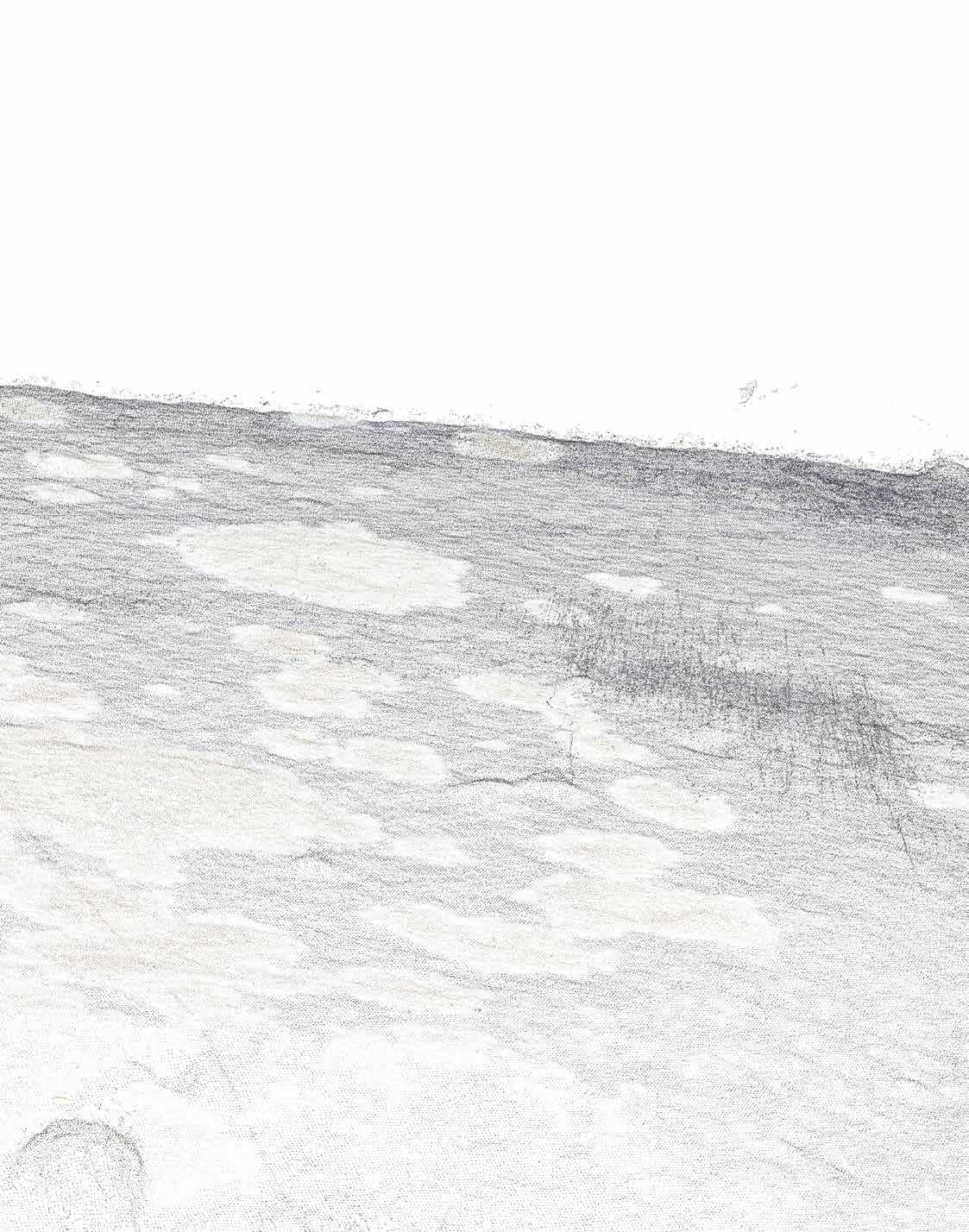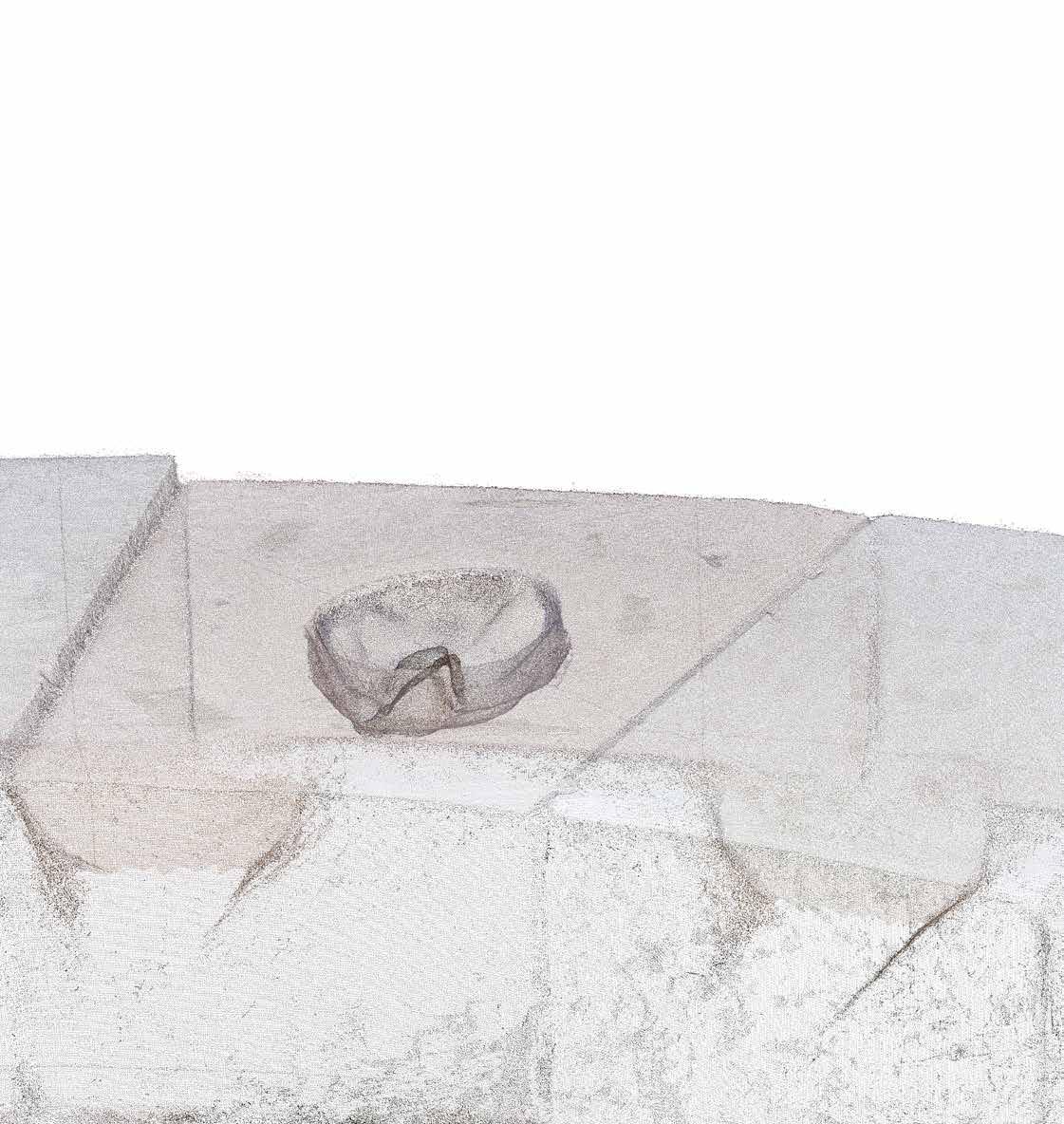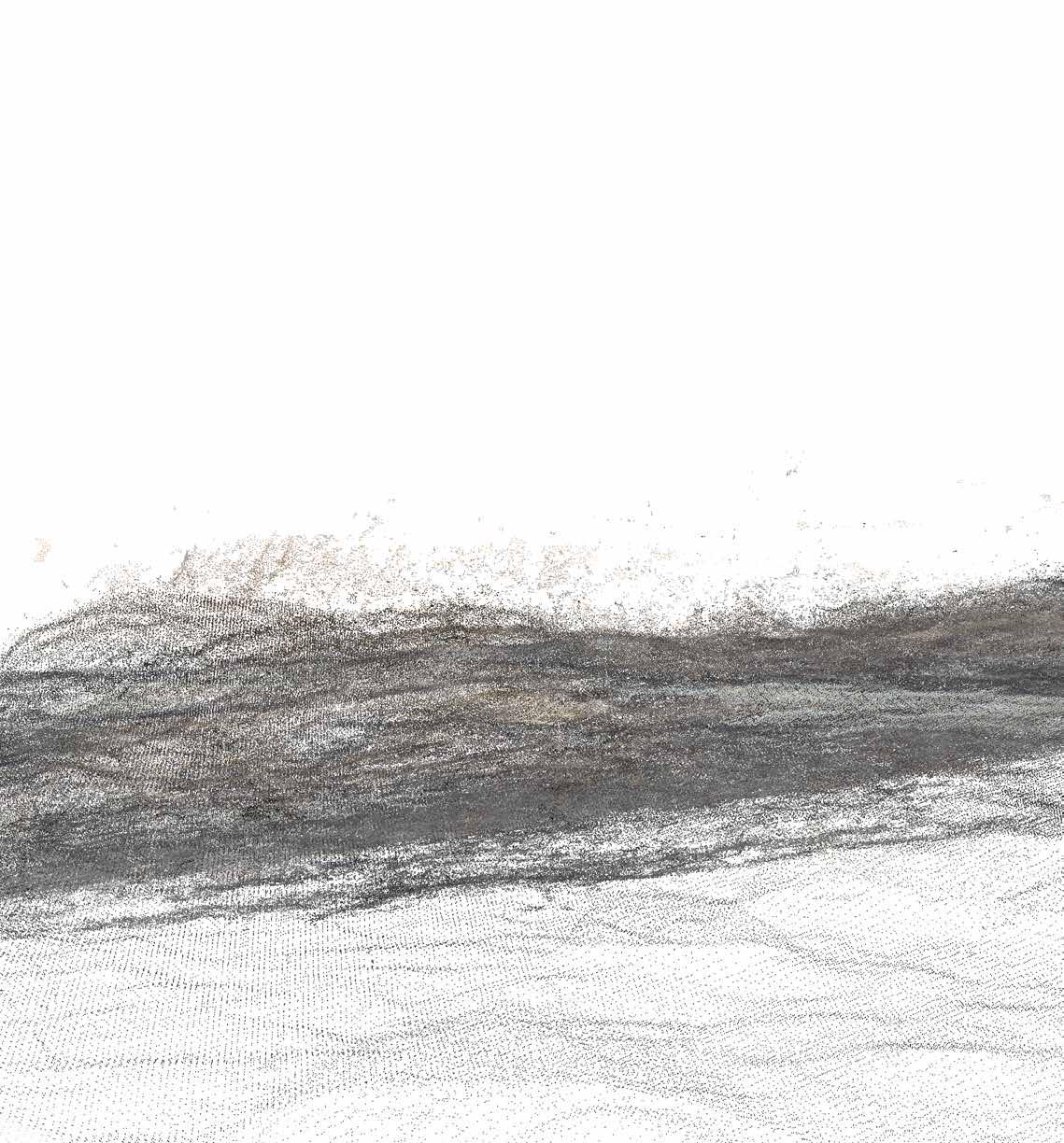LAND COME
 Artwork by Tekla Gedeon and Sebastian Gschanes
Artwork by Tekla Gedeon and Sebastian Gschanes
Fuzzy Earth, 2021
ShimmerShimmer is an artificial stone sculpture that is designed to create long-term collaborations with lichens. These microorganisms are crucial for our planet’s global climate. Over the next years, decades, centuries lichens will slowly occupy the surface of the sculpture.
Landscapes-Yet-To-Come
Lichen
Rocks of Pilis Mountain
Immortal Tribes
Symbiotic Architecture Coma
Battles
Alliances
Micro Lands
Shimmer
First Inhabitants Ghosts
Thriving Worlds
Lichens are ancient worlds. They are created through an entangled symbiosis of thousands of species, interacting in every conceivable fashion. Their thallus involve fungus, photosynthetic algae, various bacteria and entities that humanity can not even name yet. They were among the first ecosystems that appeared on Earth and most likely they will be one of the last. Lichens are immortal organisms, their growth, reproduction and death takes unusual patterns. [1] They appear on stone and tree surfaces. Absorbing carbon dioxide and moisture, they are able to expand their thallus with one millimetre annually. These ecosystems can dry out, hibernate and reborn within seconds. Their celestial lifespan makes them muted protagonists of the anthropocene and effortless successors of the climate emergencies we face today.


than human world and meet lichens: Search thoroughly! Search the micro worlds. Look at

I went searching. I was walking across the feet of Pilis on crumbling stone paths passing by sandy walls and moist caves. I moved between sunrise and sunset. I had to leave the city. The urban areas are deserted from lichens. These microorganisms are the ancestors of most of our natural environments, hence they are often unwelcomed by humankind. They are considered threats to stone monuments and to architecture itself. There are differences between the grainy structure of sandstone and the sharp edges of limestone. I experienced all sorts of rock textures in the Pilis. They were dry and wet at the same time. Though, the lichens of the region prefer humidity. The air became more saturated with water as I stepped deeper into the woods. This is where I found lichens, where the canopy opened, where the rocks were warm and air was thick. They were white with a touch of green. Some reached 10 cm in diameter. I wondered how old they might be. With the accumulated knowledge I enter the city once again.

For those who care strongly about the landscapes-yet-to-come: Dream small, but dream long! Dream of a thousand year long collaboration between the ever evolving ecosystem of lichens and the rocks of Pilis Mountain.

We vision a new emerging land in metropolitan grounds that invites lichens to sprout. We propose a system of care that provides guardianship for them and we practice an alternative way of making and designing that is symbiotic.
1) Spend time with lichens, follow their behaviour patterns, listen to their needs with all of your sensors.
2) Work in alliance with lichens, pay close attention to their environment, which surfaces they appear the most, which type of stone finishes they thrive exquisitely, what kind of cracks they inhabit.
3) Select your materials carefully and embrace the shifting, diverse qualities of rock formations.

4) Expand your perception of time and celebrate longevity.
5) Take interest in the future and cultivate caregivers.

Twenty micro lands stand in a circle. Each of them started as an illusion of someone else’s. Initially, they were only blurred thoughts about sediment colour shades, secret conversations with lichens, rock fragments and iron oxide pigments.
Late August a firefighter car arrived at the peak of Pilisborosjenő and it parked opposite to the fort. We were awaiting this moment with great enthusiasm. They brought us water. We made rocks.
We made rocks as a collective. Individual illusions merged together into a shared vision. Single rocks united and formed a land. A land that hosts immortal landscapes at the end of time and a concept that encourages generational care for the more than human world.


All materials that we found out there, sediments, water and air are now accumulated here, in the city. They form a circle. We like to call it Shimmer. It is time to set Shimmer free, to let it experience the weather, float through seasons, and listen to the sounds of the square. It is time for the city to welcome Shimmer and the emerging micro

landscapes with care and appreciation. From now on we will be able to spectate lichens to hatch and to sprout. Over time they will appear in most south facing corners and cracks as tiny dots and they will expand from there with only one millimetre every year. We have to train our patience.

I always wondered, what will the first lichens look like, how many months and years will they take to reveal themselves to the naked eye. I kept on looking. Every single time when I passed by the rocks, I looked for signs. I watched the autumn rain accumulating in the cavities, filling up micro ponds and valleys. After some time I saw algae appearing on the side walls of some of the sunken voids. Once I spotted a falling leaf getting trapped in a ditch of Shimmer and breaking down to dust. The winter frost cracked, the summer heat dried the rocks. An entire year passed when I first noticed a group of bright orange marks sprinkled across the edge of a stepped landscape. They were tiny, but many. They were sitting in the deepest corners after each other, as they were trying to queue up for something. They seemed fragile I did not dare to touch.



Lichens expand their thallus in a circular manner. They constantly reach out for new lands. The centres are older than the edges. For a human inspector they might seem a static and slowly advancing creature, the reality is that they have an extremely lively and dynamic interior ecology. As lichens grow older they reproduce more and they reproduce asexually. [2] Each lichen is a thriving world within itself, that is ready to stay for centuries, but not to settle its ecosystem for a moment.

If you look closely you might be able to see the traces.

You should understand that lichens are symbiotic organisms that change their composition as they grow larger. They have learned to adapt to various climatic conditions over the millennia. This flexibility came hand in hand with immortality.
The only way to end the life of a lichen is to use brute physical or chemical force. With this so-called maintenance we ensure a long lastingness of the human monolithic built environment. The lichen may be gone after such treatment. However, it leaves a mark on the stone, a round ghostlike shadow; a few square centimeters untouched by sunlight for many decades, slowly dissolved by bacteria and eventually unable to wash away with 100 bars of hi-jet water stream.


When two individual lichen’s thalluses reach each other, they might merge. They blur the boundaries between one and another. They see each other as self. Their ecosystem, their physical body, their colours fade into one unified organism hiding the fact they ever existed otherwise. They continue to grow outwards in a new altered geometry to create new links, new connections with their neighbour companions until there is no more me, you and they, only us.

Battles
Zones started to draw out on the surface of the rocks; clear distinctions between lichens, zones of antagonism, dark borders and disturbed map-like patterns. These are signs of lichens in warfare. When two genetically distinct lichens establish a physical contact, they recognise each other as unalike and they start a battle for territory. They secrete chemical compounds to mark their terrain and they start to expand more quickly to opposing directions.



There is a correlation between the health of lichens and the well-being of the surrounding environment. Lichens do not have very developed roots, that’s why they are so reliant on the surrounding air. Through their sensibility they can even track down air pollutants that are invisible for human-made sensors and they ultimately filter them out. But what if the invisible and visible toxins floating around our cities take over. The system of the lichen shuts down into a deep hibernation, close to death but still miles away. They can endure in this status over years and miraculously come back to life whenever the quality of air allows it.

Immortal Tribes
Lichens reveal the ephemerality of the anthropocentric era on Earth. I imagine my ancestors coming and visiting Shimmer. What would they see, how would they interact with lichens? What offerings would they make? I admire lichens. Lichens started to cover the planet long before any other growing, swimming, crawling or walking creature. Since then they are functioning as a breathing organ altering the global atmosphere relentlessly. The endurance of these immortal landscapes at the end of time despite all occurring crises is assured.
We ought to pay close attention to lichens. Their flexibility in reacting to changing circumstances might show us a way towards survival. We must act as a collective, share our vision and encourage future generations to continue the guardianship of Shimmer and its lichen worlds.



Fuzzy Earth
Fuzzy Earth is an international art collective and research practice formed by Tekla Gedeon and Sebastian Gschanes.
Fuzzy creates spaces, objects and events that explore our relationship with nature and technology. Through the application of speculative design methodologies, our work challenges the role of ecological environments, industrial landscapes and botanical institutions.
Edited
by: Tekla Gedeon & Sebastian Gschanes, Fuzzy EarthIllustrations by: Tekla Gedeon & Sebastian Gschanes, Fuzzy Earth
Collaborators: Laura Bacher, Zsófia Magdolna Baksa, Anna Kaposi-Ly, Bogdán Kiss, Marcell Korhán, Orsi Kroneraff, Vencel Kustra, András Paragi
Supported by: Építész Szakkollégium, Bartók Boulevard Egyesület
Printed in Budapest, 2021
© Copyright Tekla Gedeon & Sebastian Gschanes, Fuzzy Earth
A collection of speculative narratives that imagines the future lichen worlds of Shimmer by Fuzzy Earth.
